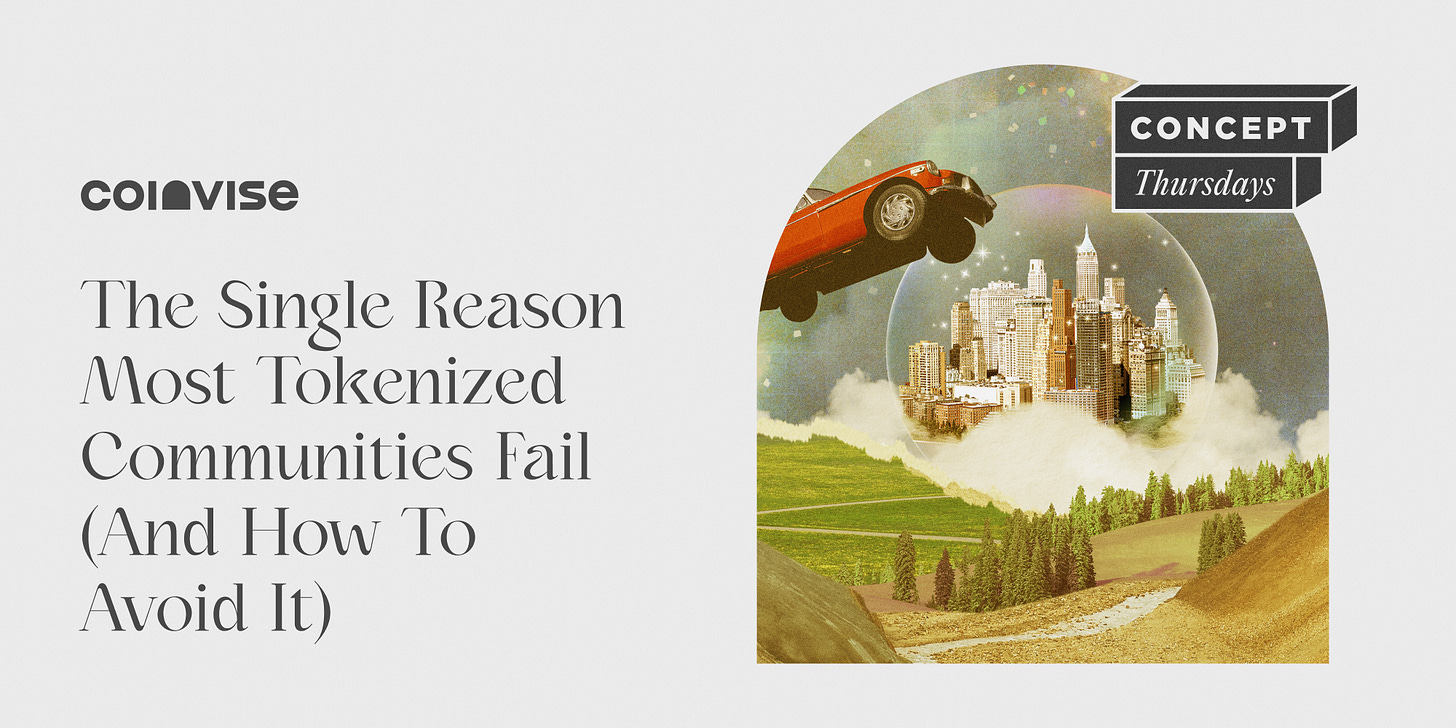The Single Reason Most Tokenized Communities Fail (And How To Avoid It)
Subscribe to our newsletter to receive twice a week directly in your inbox our best tips to help you build tokenized communities 🔥
If you’re not a subscriber yet, here’s what you missed:
Hey there - welcome back 👋
I have been helping dozens of tokenized communities for over a year and a half now.
And for those past 18 months, I realized that most people who want to start their tokenized community end up failing because of one single reason:
They focus too much on the technical or Web3 side of community building.
They think having great Tokenomics or spending hours on whether they should launch an NFT or a social token will make their community succeed. But they never realize these are details for community members.
To be honest, it took me quite a while to learn this lesson too.
But I ended up understanding Web3 is simply a tool that makes 10x easier the process of gathering an online community. The reason members join and stick around in your community is not Web3. It's the peace of mind they'll get solving a problem they can't solve alone.
And that's the true secret of any successful tokenized community.
Successful tokenized community focus on solving problems.
But the top 1% of tokenized communities don't solve any problems.
They solve problems that wake their members up at night.
So if you're struggling to have an engaged community, maybe you should focus less on the Web3 side of it and start refining the problem you're trying to solve.
To do this, there are 3 key elements:
1. You Need To Solve A Problem That Is Painful.
If the problem you're solving is just a little embarrassing, it won't be enough to trigger the desire for someone to join your community and engage in it.
Building a community to help people "make more friends in Web3" is nice, but your potential members can live without it and will never wake up one morning saying, "I REALLY need new friends in Web3, let me spend 3 hours this morning to meet new people."
The takeaway here is that members need to feel the pain to contribute.
A better problem for a community to solve would be "I help crypto beginners invest thoughtfully, so they don't lose money" or "I help Web2 marketers transition into Web3, so they don't feel left behind."
Here, potential members would feel the pain of "losing money" or "being left behind."
2. You Need To Solve A Problem That Is Urgent.
People always take action when it becomes urgent. It's human nature.
So try to solve a problem that is in their day-to-day reality. Ask yourself:
What do they try to improve every day?
What do they need help with?
What do they struggle with?
Each of these questions will help you find problems that need to be solved right now.
This is a key part of getting support. Few members will end up contributing daily if the problem you're helping them to solve is too distant from their daily lives.
3. You Need To Solve A Problem That Is Acknowledged
Finally, your members must recognize they have this problem in their own life.
Think of it for a second. Maybe you think (rightfully) that your local baker should improve its social media strategy - but the baker himself doesn't care. It's probably a waste of time trying to convince him because it's not a problem he has yet acknowledged.
Well, the same thing goes with community building.
If you're trying to solve a problem not yet acknowledged by your audience, you'll spend more time convincing them they need to solve this problem than actually getting their help.
So build a community that solves problems members have on top minds.
That's a wrap!
You should now have all the keys to creating a successful community!
Remember, don't focus on the Web3 aspect of the community. Instead:
Solve a problem that is painful
Solve a problem that is urgent
Solve a problem that is acknowledged
If you follow this piece of advice, I can ensure it will be much easier for you to have active contributors!
Chat next Monday!
- Eliot Couvat (@CDTEliot)
Found this helpful?
Leave a comment and share this article with your friends 😉



Loving this content!